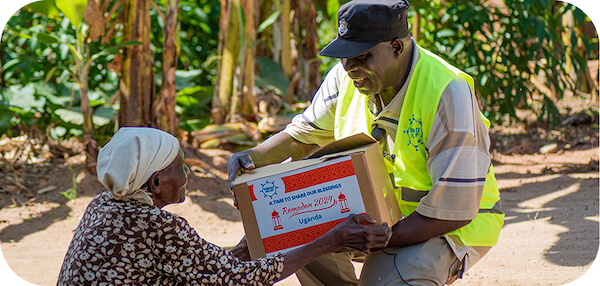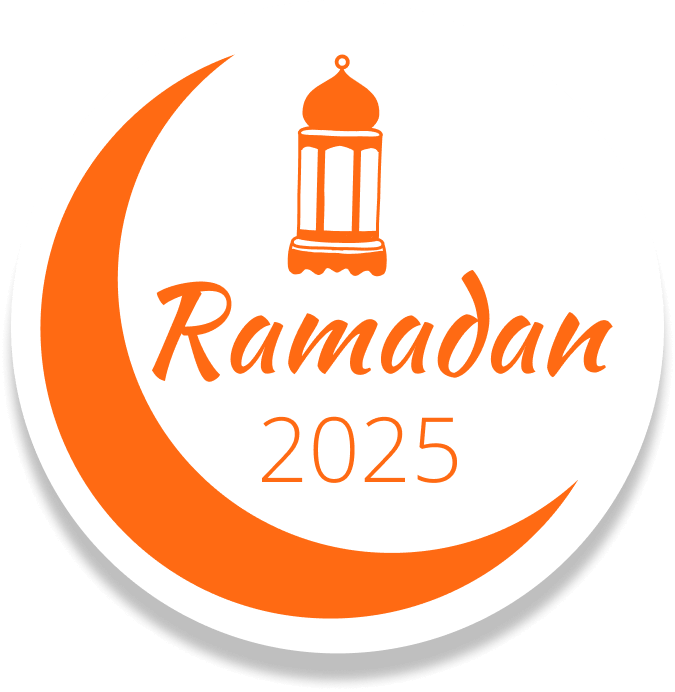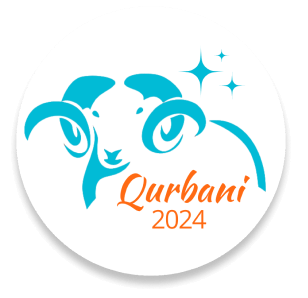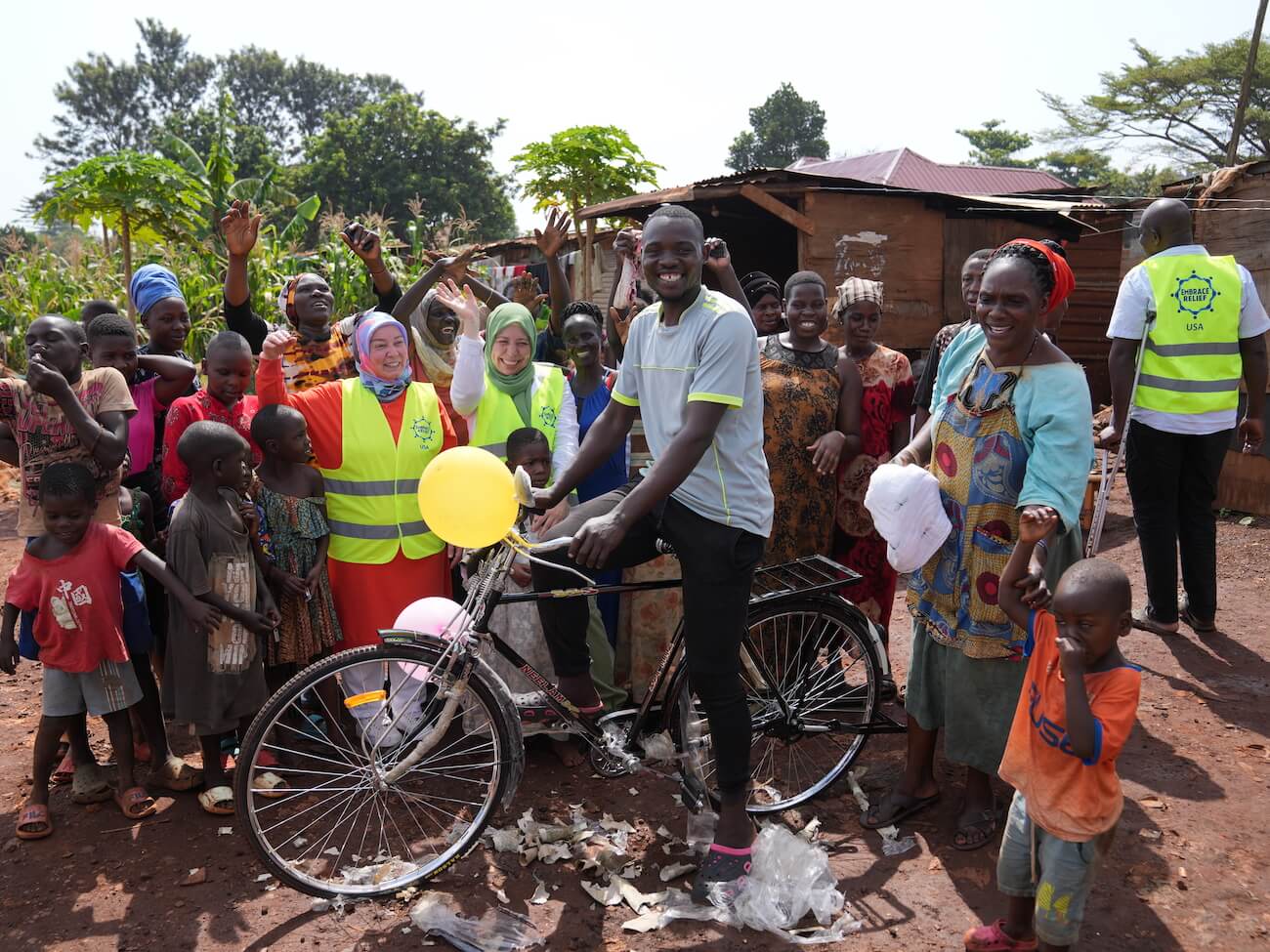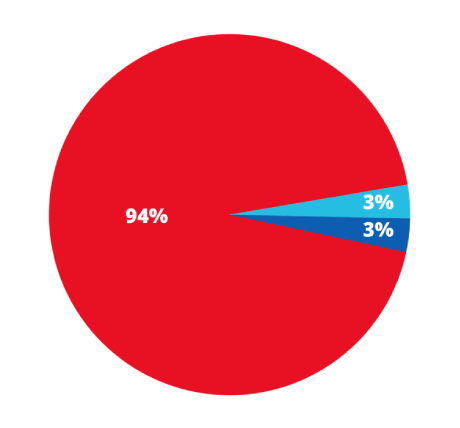Eid prayer is one of the most important acts of worship on Eid ul-Fitr and Eid ul-Adha. It is a special congregational prayer performed in the morning that marks the beginning of the Eid celebrations. Muslims around the world gather in mosques, open fields, and prayer grounds to offer this prayer, thanking Allah for His blessings and seeking His guidance.
While many people celebrate Eid with joy, millions of families around the world struggle with poverty and hunger. Embrace Relief works to ensure that underprivileged families can also experience the happiness of Eid through food aid, clean water initiatives, and humanitarian support.
What is Eid Prayer?
Eid prayer, known as Salah al-Eid, is a two-unit (rak‘ah) congregational prayer performed on the morning of Eid ul-Fitr and Eid ul-Adha. It is one of the most significant Sunnah (recommended) prayers in Islam.
- Eid ul-Fitr prayer is performed on the first day of Shawwal, marking the end of Ramadan.
- Eid ul-Adha prayer takes place on the 10th day of Dhul-Hijjah, during the days of Hajj and Qurbani (sacrifice).
The prayer is a way for Muslims to express gratitude, unity, and devotion to Allah.
What Time is Eid Prayer in 2025?
Eid prayer is performed shortly after sunrise, usually about 15–30 minutes after Fajr (dawn prayer) and before Dhuhr (midday prayer).
Expected Eid Prayer Timings for 2025
- Eid ul-Fitr 2025: Expected to be on March 30, 2025 (subject to moon sighting), with prayer typically between 6:30 AM – 8:00 AM, depending on location.
- Eid ul-Adha 2025: Expected to be on June 6, 2025, with similar prayer timing in the morning.
How to Find the Exact Time for Your City
- Check your local mosque’s announcement a day before Eid.
- Use Islamic apps or websites that provide accurate prayer times based on your location.
- Listen for public Eid announcements, as some cities organize large outdoor gatherings.
How to Perform Eid Prayer
Eid prayer is different from the daily five obligatory prayers in Islam. It consists of two rak‘ahs (units of prayer) with additional Takbirs (Allahu Akbar recitations).
Step-by-Step Guide to Performing Eid Prayer
- Make the intention (niyyah) – “I intend to pray two rak‘ahs of Eid prayer for the sake of Allah.”
- First Rak‘ah (Unit of Prayer)
- The imam says Allahu Akbar (Takbir) to begin the prayer.
- The congregation repeats Takbir six or seven times (depending on school of thought).
- Surah Al-Fatihah is recited, followed by another surah (commonly Surah Al-A‘la or Surah Qaf).
- The prayer continues as usual with Ruku (bowing) and Sujood (prostration).
- Second Rak‘ah
- After standing up, Takbir is repeated five times.
- Surah Al-Fatihah is recited again, followed by another surah (commonly Surah Al-Ghashiyah).
- The prayer concludes with Tashahhud (final sitting) and Salam (peace greeting).
- Khutbah (Eid Sermon) – After the prayer, the imam delivers a sermon, reminding the congregation about the importance of gratitude, charity (Zakat al-Fitr), and unity.
Where is Eid Prayer Performed?
- Mosques – Many mosques host large Eid prayers.
- Open prayer grounds (Eidgahs) – In many countries, Eid prayers are performed in large open fields to accommodate more people.
- Community Centers & Parks – In Western countries, some Eid prayers are organized in public spaces, stadiums, or convention centers.
Rules and Sunnah of Eid Prayer
To make the most of Eid prayer, there are several recommended Sunnah (Prophetic traditions) to follow:
Before the Prayer




During and After the Prayer




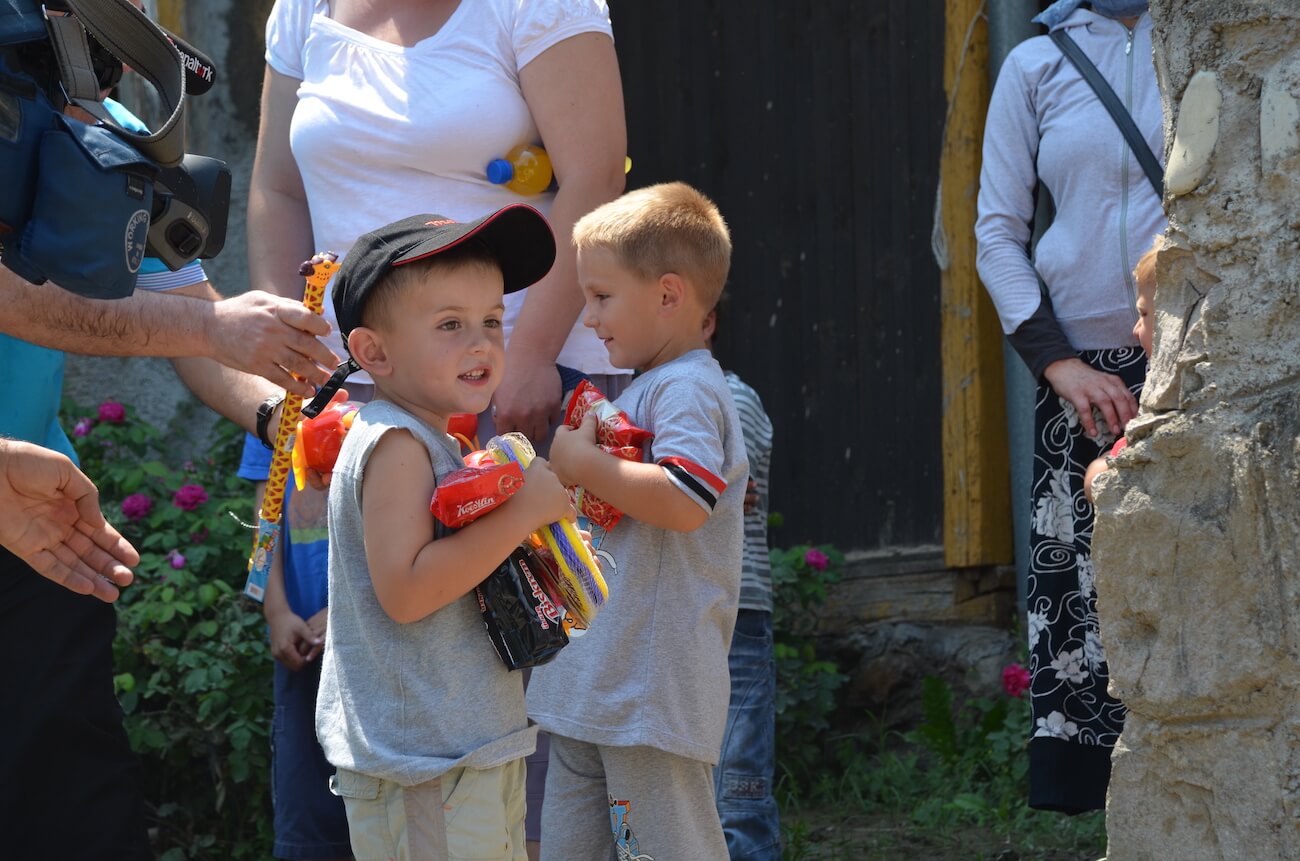
Common Questions About Eid Prayer
1. Can Eid Prayer Be Performed at Home?
Eid prayer is ideally performed in congregation, but in cases of necessity (such as illness or restrictions), it may be prayed at home with family members.
2. Is Eid Prayer Mandatory?
Eid prayer is Wajib (obligatory) according to Hanafi scholars and Sunnah Mu’akkadah (highly recommended) according to other schools of thought.
3. Can Women and Children Attend Eid Prayer?
Yes, women and children are encouraged to attend Eid prayer, as it is a communal celebration. Many mosques and prayer grounds provide separate spaces for women.
How Embrace Relief Helps Families Celebrate Eid
While millions gather for Eid prayer, many families face hunger, poverty, and hardship during this time. Embrace Relief works to bring hope to these communities by providing:
- Eid food packages to ensure that every family has a meal to celebrate.
- Clean water access so communities can perform ablution (Wudu) and prepare for prayer.
- Orphan sponsorship programs to support children without families.
- Emergency relief efforts for refugees and displaced communities.
Final Thoughts: The Power of Eid Prayer and Giving Back
Eid prayer is a beautiful reminder of gratitude, unity, and faith. It is a time to come together as a community, celebrate our blessings, and extend our generosity to those in need.
Make this Eid more meaningful by giving back. Donate to Embrace Relief and help families in need celebrate Eid with dignity and joy.
Donate For Ramadan 2025
Embrace Relief aims to provide 100,000 people with nutritious food during our International Hunger Relief: Ramadan 2025 campaign.
